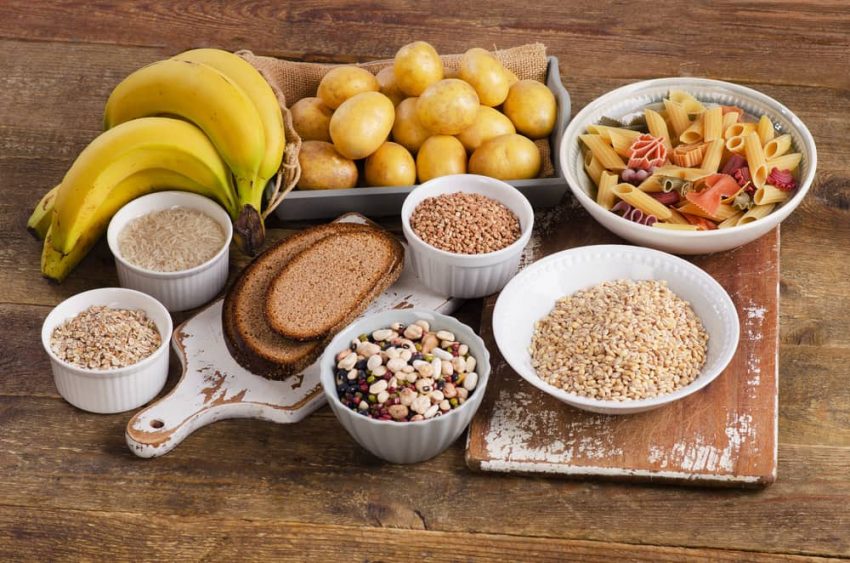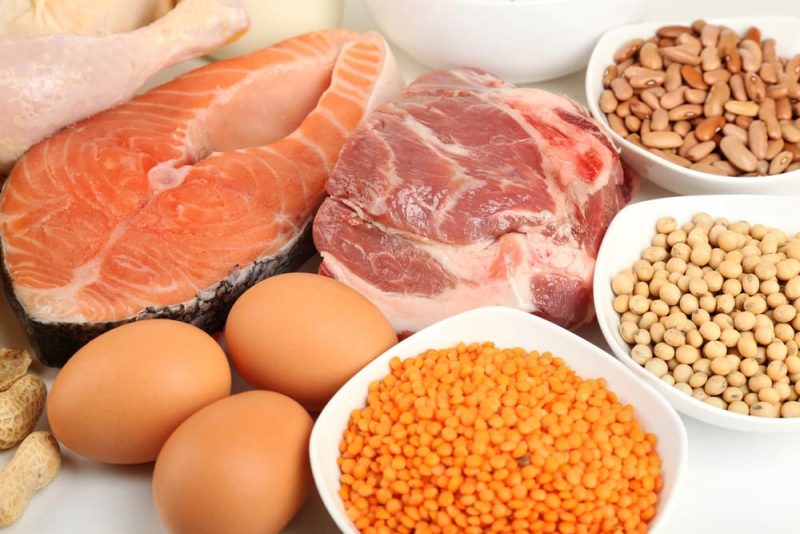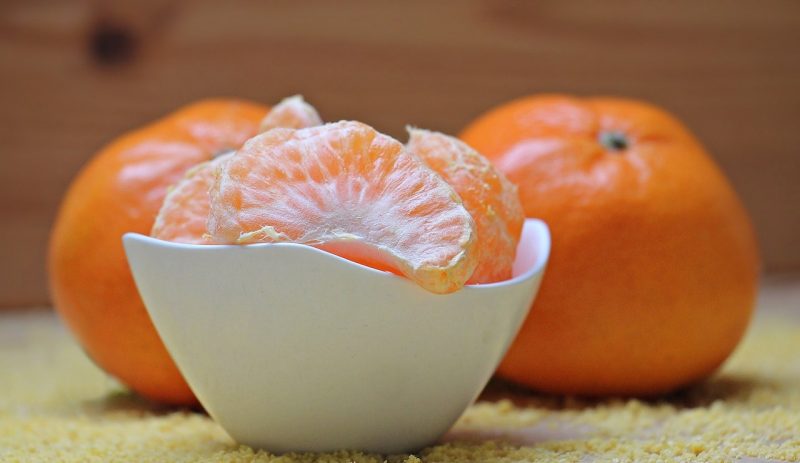The nutrients They are the compounds that every living being needs to live and that it incorporates through food intake. For instance: proteins, carbohydrates and lipids.
The food they have different types and amounts of nutrients. These nutrients are translated into energy and fulfill vital functions that guarantee the correct functioning of the organism of living beings. The higher the amount of nutrients, the better the food is considered in terms of its nutritional value.
Each group of nutrients fulfills a specific functionTherefore, an individual must incorporate different types of foods to include all kinds of nutrients in their diet. There are five main groups of nutrients:
- Carbohydrates. Present in foods such as pasta, rice, bread, cereals, milk, fruits, potatoes, among others.
- Lipids. Present in foods such as oils, butter, egg yolk, fish, milk, among others.
- Protein. Present in foods such as fish, chicken, milk, pasta, almonds, vegetables, among others.
- Vitamins. Present in foods such as citrus fruits, carrots, green vegetables, bananas, meats, cheeses, eggs, among others.
- Minerals. Present in foods such as nuts, legumes, green vegetables, cereals, fish, meat, among others.
Carbohydrates

The carbohydrates They are biomolecules that are characterized by providing a large amount of energy to the body. It is from these foods that the human being obtains the necessary energy to move and perform physical and intellectual activity. They also promote the function of the intestinal tract, prevent blood clotting, produce satiety and prevent the sensation of appetite.
Cereals, flours, milk and yogurt are some foods that are high in carbohydrates.
The carbohydrate deficiency in the body it produces a loss of weight (both in fat and in muscle mass). Consuming too much carbohydrates leads to weight gain, since unmetabolized carbohydrates are deposited as fats in the body.
Carbohydrates can be:
- Simple carbohydrates. They have little nutritional value and are digested quickly. In addition, they do not have a large amount of essential nutrients and, for this reason, it is suggested to reduce or control their consumption. For instance: foods with sugars such as cakes or sweets.
- Complex carbohydrates. They are rich in fibers, so they take longer to digest, which produces a greater feeling of satiety. They burn fat in an accelerated way and generate higher levels of energy. For instance: starchy foods such as rice or potatoes.
Examples of foods rich in carbohydrates
Examples of simple carbohydrates:
| White flour | Sweet cookies | Refreshments |
| Honey | Pretzels | Whole milk |
| Fruits | Juices | Margarine |
| Chocolate | Cereals | Butter or shortening |
Examples of complex carbohydrates:
| Broccoli | Celery | Jewish |
| Zucchini | Radishes | Onion |
| Whole grains | Lentils | Fennel |
| Vegetables | Potatoes or potatoes | Oatmeal |
| Lettuce | Green peas | Integral rice |
| Tomatoes | Beans | Quinoa or quinoa |
| Spinach | Pasta |
Lipids
The lipids they are a group of heterogeneous biomolecules (very diverse molecules). Despite their heterogeneity, these molecules have one thing in common: they are (mostly) insoluble in water. However, they are soluble in hydrocarbons. They are present in foods such as oils, butter, nuts, avocado, among others.
The fats They are a type of lipid and animals (mostly mammals) often need to accumulate it for survival. Animals such as the whale, the seal or the penguin create a layer of lipids that isolates the body from adverse environmental conditions.
Lipids are classified into two groups:
- Saponifiable lipids. They may be:
- Fatty acids. They are the simplest lipids, which are commonly known as saturated fatty acids. This type of fatty acid is characterized by having a long hydrocarbon chain. In turn, they can be classified into: short chain saturated fatty acids and long chain saturated fatty acids.
- Unsaturated fatty acids. They can be monounsaturated fatty acids (the carbon chain has only one carbon-carbon double bond) or polyunsaturated fatty acids (they have more than one double bond between their carbon molecules).
- Unsaponifiable lipids. They are lipids that do not contain fatty acids in their composition and can be classified into: terpenes, steroids and eicosanoids.
Examples of foods rich in lipids
Foods rich in saponifiable lipids:
Short chain saturated fatty acids
- Carob tree
- Vanilla
- Croton oil
- Goat milk
- Butter
- Parmesan
Long chain saturated fatty acids
- Nutmeg
- Palm oil
- Butter
- Meat
- Dairy products
- Cocoa
- Animal fats
- Bee wax
- Behen oils
- Rape
- Peanut
- Peanut oil
Unsaturated fatty acids
- Liver
- Myrtaceae seeds
- Olive oil
- Avocado oil
- Flax
- Sesame
- Hemp
Foods rich in unsaponifiable lipids:
Essential oils
- Soy oil
- Almonds oil
- Cashew oil
Eicosanoids (omega 3 and omega 6 acids)
- Sunflower oil
- Flax oil
- Olive oil
- Almonds
- Cashew nuts
- Herring
- Tuna
- Hazelnuts
- Cod
- Anchovies
- Broccoli
- Mackerel
- Pumpkin
- Chinese cabbage
- Kale
- Brussels sprouts
- Cauliflower
- Spinach
- Prawns
- Mollusks
- Walnuts
- Parsley
- Pumpkin seeds
- Sunflower seeds
- Quinoa
- Salmon
- Red mullet
- Sardines
- Flax seeds
- Trout
Protein

The protein They are macromolecules whose function is to increase mass and strengthen muscle tone. In other words, they protect the muscles, tendons, and organs of the body. They are present in foods such as fish, chicken, almonds, and eggs, among others.
In addition, proteins have the function of producing enzymes, hormones, neurotransmitters, among other molecules. They are responsible for producing body tissue and control communication between organs and cells.
There are two main types of protein:
- Fibrous proteins. They are proteins that do not dissolve in water. Their structure is elongated and, as their name indicates, they are fibrous. For instance: gelatin.
- Globular proteins. They are proteins that have a more or less spherical format and are soluble in aqueous solutions. For instance: casein from milk or egg.
Examples of high protein foods
| Rice | Soy milk | Chickpeas |
| Tuna | Lentils | Egg |
| Trout | Pasta | Ham |
| Birds | Turkey | Salmon |
| Meat | Chicken | Soy |
| Egg white | Dairy products | Vegetables |
| Beans | Sausages |
Vitamins and minerals

The vitamins They are nutrients that fulfill various functions for the development of the organism. They are present in foods such as fruits, vegetables, meats, eggs, olive oil, among others.
There are 13 fundamental vitamins that are classified into two groups:
- Fat-soluble vitamins. They are those that dissolve in oils and fats and that the body treasures. These vitamins are: A, D, E and K.
- Water soluble vitamins. They are those that dissolve in water and the body does not store them but releases them through the urine, so they must be consumed regularly. These vitamins are: B1, B2, B3, B5, B6, B7, B9, B12 and C.
Each of the vitamins fulfills one or various functions determined in the body, among which are: the formation of bone tissue, the proper functioning of metabolism, the generation of red blood cells, hormonal development, nervous function, antioxidant function, among many others.
Examples of foods rich in vitamins
Water soluble vitamins:
Vitamin B1
- Wholemeal bread
- Eggs
- Cereals
- Vegetables
- Liver
Vitamin B2
- Eggs
- Cereals
- Cheese
- Fish
- Liver
- Mushrooms
- Yogurt
- Green vegetables
Vitamin B3
- Meat
- Fish
- Milk
- Cereals
- Bread
- Beer yeast
- Walnuts
- Flour
- Integral rice
- Liver
Vitamin B5
- Fish
- Pork
- Bread
- Chicken
- Yogurt
- Yams
- Broccoli
- Champignon
- Vegetables
- Potatoes
Vitamin B6
- Pork
- Fish
- Chicken
- Vegetables
- Eggs
- Soy
- Bananas
- Potatoes
- Walnuts
- Cereals
Vitamin B7
- Yolk
- Liver
- Avocado
- Milk
- Cereals
- Strawberries
Vitamin B9
- Green leafy vegetables
- Nuts
- Chickpeas
- Cereals
- Liver
- Citrus
- Sunflower seeds
- Vegetables
B12 vitamin
- Meat
- Fish
- Eggs
- Milk
- Cheese
- Yogurt
- Seafood
Vitamin C
- Citrus
- Strawberries
- Kiwi
- Peppers
- Broccoli
- Cantaloupe
- Potatoes
- Parsley
- Tomatoes
Fat-soluble vitamins:
Vitamin E
- Wheat germ
- Hazelnuts
- Linseed oil
- Canola oil
- Corn oil
- Soy oil
- Broccoli
- Pistachios
- Walnuts
- Peppers
- Kiwis
- Mango
- Tomatoes
- Asparagus
- Zucchini
Vitamin A
- Red pepper
- Peppers
- Cayenne
- Chili
- Sweet potatoes (sweet potato)
- Dried herbs
- Lettuce
- Apricots
- Cantaloupe
- Pumpkin
- Green leafy vegetable
Vitamin K
- Cabbage
- Spinach
- Turnip greens
- Chard
- Mustard leaves
- Parsley
- Lettuce
- Brussels sprouts
- Broccoli
- Cauliflower
- Cabbage
Vitamin D
- Liver oil
- Fish
- Cereals fortified with vitamin D
- Oysters
- Caviar (red or black)
- Sausages
- Fortified dairy
- Soy milk
- Tofu
Minerals
The minerals They are chemical elements essential for the proper functioning of the body. 4% of the body’s weight is considered to be made up of 22 different minerals. These minerals have the function of synthesizing hormones, making tissue and regulating the chemical impulses that occur between cells. They are present in foods such as seeds, nuts, shellfish, mushrooms, among others.
Minerals can be divided into:
- Macroelements. Minerals corresponding to the group of macroelements. Are: sulfur, calcium, chlorine, phosphorus, magnesium, potassium, sodium, and iodine.
- Trace elements. Minerals corresponding to the group of microelements. It is necessary to regulate or eat foods that contain them in smaller amounts. Are: cobalt, copper, chromium, fluorine, iron, manganese, molybdenum, selenium, and zinc.
Examples of foods rich in minerals
Below we list foods rich in minerals, macroelements and microelements.
Minerals from the group of macroelements
| Olives | Sausages | Fish |
| Garlic | Pickles | Plantain |
| Algae | Canned | Dairy products |
| Almonds | Asparagus | Leek |
| Rice | Spinach | Common salt |
| Whole oats | Cold cuts | Sardines |
| Meat | Dry fruits | Sesame |
| Onion | Jewish | Soy |
| Whole grains | Legume | Wheat |
| Mushrooms | Corn | Vegetables |
| Cabbage | Potato | Yolk |
Minerals from the group of microelements
| Algae | Chickpeas | Fish |
| Oatmeal | Figs | Plantain |
| Cocoa | Bean | Cheeses |
| Pumpkin | Dairy products | Red beet |
| Meat | Vegetables | Sea salt |
| Onion | lentils | Sesame seeds |
| Whole grains | Seafood | Mushrooms |
| Crustaceans | Oysters | Soy |
| Spinach | Wholemeal bread | Black tea |
